Ethnicity Serbian Religion Serbian Orthodox | Name Mileva Maric Role Physicist | |
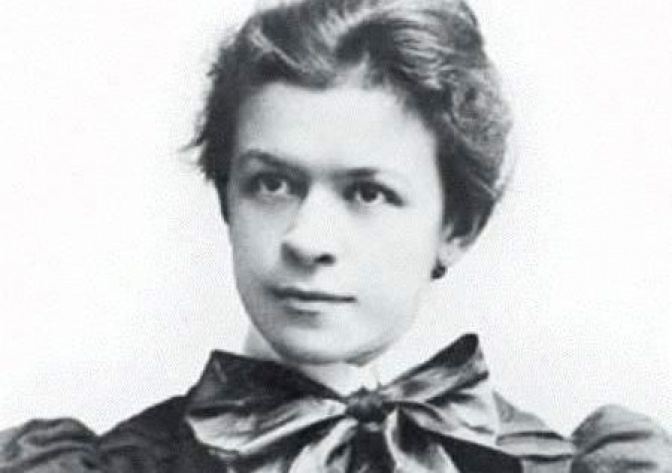 | ||
Resting place Friedhof Nordheim, Zurich, Switzerland Alma mater Eidgenossisches Polytechnikum today Eidgenossische Technische Hochschule (ETH) Zurich, Switzerland Parent(s) Marija Maric nee Ruzic and Milos Maric Died August 4, 1948, Zurich, Switzerland Children Hans Albert Einstein, Eduard Einstein, Lieserl Einstein Grandchildren Bernhard Caesar Einstein, Evelyn Einstein, Klaus Martin Einstein Books In Albert\'s Shadow: The Life and Letters of Mileva Maric, Einstein\'s First Wife Similar People | ||
The tragic destiny of Mileva Marić Einstein
Mileva Marić (Serbian Cyrillic: Милева Марић; December 19, 1875 – August 4, 1948), sometimes called Mileva Marić-Einstein or Mileva Marić-Ajnštajn, was a Serbian physicist. She was the only woman among Albert Einstein's fellow students at Zürich's Polytechnic and was the second woman to finish a full program of study at the Department: Mathematics and Physics. They developed a relationship and had a daughter before their marriage, Lieserl, who either died young or was given up for adoption. After their marriage in 1903, they had two sons, Hans Albert and Eduard.
Contents
- The tragic destiny of Mileva Mari Einstein
- The Secret Woman Behind Einsteins Success Mileva Mari
- Biography
- Role in physics
- Marriage and family
- Move to Berlin and separation
- Death
- Honours
- References
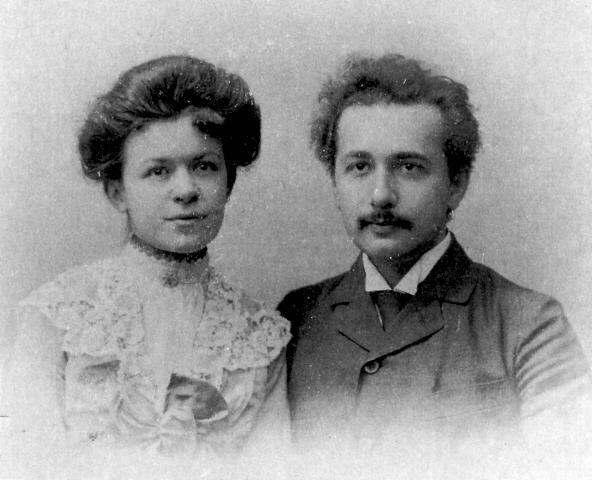
They separated in 1914, with Marić taking the boys and returning to Zurich from Berlin. They divorced in 1919; that year Einstein married again. When he received the Nobel Prize in 1921, he transferred the money to Marić, chiefly to support their sons; she had access to the interest. In 1930 at about age 20, their second son Eduard had a breakdown and was diagnosed with schizophrenia. With expenses mounting by the late 1930s for his institutional care, Marić sold two of the three houses she and Einstein had invested in. He made regular contributions to his sons' care, which he continued after emigrating to the United States with his second wife (Elsa, his first cousin).
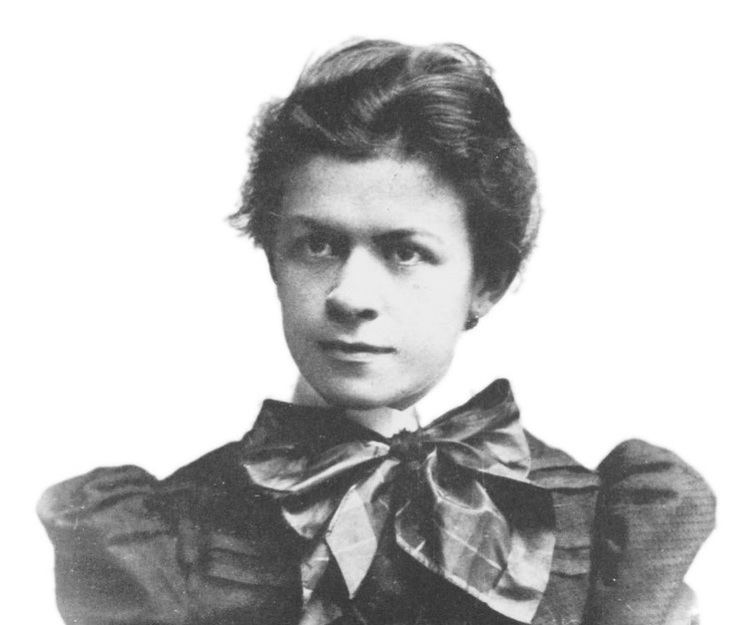
The Secret Woman Behind Einstein's Success: Mileva Marić
Biography
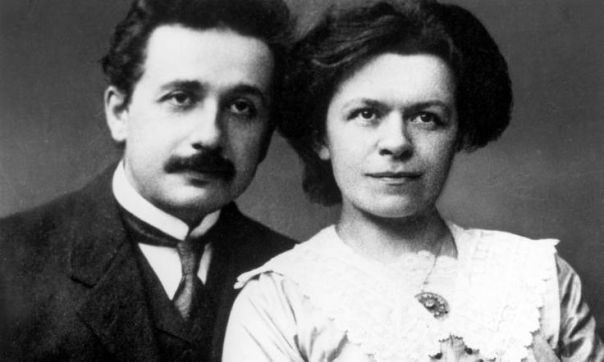
On December 19, 1875, Mileva Marić was born into a wealthy family in Titel in the Austro-Hungarian Monarchy (today Serbia) as the eldest of three children of Miloš Marić (1846–1922) and Marija Ružić - Marić (1847–1935). Shortly after her birth, her father ended his military career and took a job at the court in Ruma and later in Zagreb.
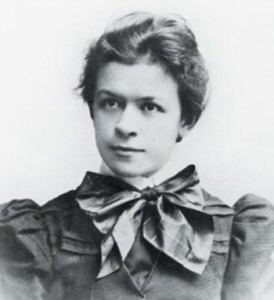
She began her secondary education in 1886 at a high school for girls in Novi Sad, but changed the following year to a high school in Sremska Mitrovica. Beginning in 1890, Marić attended the Royal Serbian Grammar School in Šabac. In 1891 her father obtained special permission to enroll Marić as a private student at the all-male Royal Classical High School in Zagreb. She passed the entrance exam and entered the tenth grade in 1892. She won special permission to attend physics lectures in February 1894 and passed the final exams in September 1894. Her grades in mathematics and physics were the highest awarded. That year she fell seriously ill and decided to move to Switzerland, where on November 14, she started at the "Girls High School" in Zurich. In 1896, Marić passed her Matura-Exam, and started studying medicine at the University of Zurich for one semester.

In the autumn of 1896, Marić switched to the Zurich Polytechnic (later Eidgenössische Technische Hochschule (ETH)), having passed the mathematics entrance examination with an average grade of 4.25 (scale 1-6). She enrolled for the diploma course to teach physics and mathematics in secondary schools (section VIA) at the same time as Albert Einstein. She was the only woman in her group of six students, and the fifth woman to enter that section, an impressive feat at a time when women were not usually admitted. She would have had to have been extraordinarily talented to overcome the restrictions on women's admittance. She and Einstein became close friends quite soon. In October Marić went to Heidelberg to study at Heidelberg University for the winter semester 1897/98, attending physics and mathematics lectures as an auditor. She rejoined the Zurich Polytechnic in April 1898, where her studies included the following courses: differential and integral calculus, descriptive and projective geometry, mechanics, theoretical physics, applied physics, experimental physics, and astronomy.
She sat the intermediate diploma examinations in 1899, one year later than the other students in her group. Her grade average of 5.05 (scale 1-6) placed her fifth out of the six students taking the examinations that year. (Einstein had come top of the previous year's candidates with a grade average of 5.7) Marić's grade in physics was 5.5 (the same as Einstein). In 1900, she failed the final teaching diploma examinations with a grade average of 4.00, having obtained only grade 2.5 in the mathematics component (theory of functions). Einstein passed the exam in fourth place with a grade average of 4.91. Passing was 5.
Marić's academic career was disrupted in 1901 when she became pregnant by Einstein. When three months pregnant, she resat the diploma examination, but failed for the second time without improving her grade. She discontinued work on her diploma dissertation that she had hoped to develop into a PhD thesis under the supervision of the physics professor Heinrich Weber.
She went to Novi Sad, where her daughter was born in 1902, probably in January. The girl was referred to in correspondence between the couple as Hansel before she was born and Lieserl after. Lieserl was put up for adoption in Serbia.
Role in physics
The question whether (and if so, to what extent) Marić contributed to Einstein's early work, and to the Annus Mirabilis Papers in particular, has been the subject of some debate. A consensus among professional historians of physics is that she made no significant scientific contribution. Some academics have argued that she was a supportive companion in science and may have helped him materially in his research.
The case for Marić as a co-author of some of Einstein's early work, putatively culminating in the 1905 papers, is based mostly on the following evidence:
"The testimony of the well-known Russian physicist Abram Joffe, who gave the name of the author of the three Annus Mirabilis Papers as Einstein-Marity, erroneously attributing the addition of the name Marity, Marić's official name, to a non-existing Swiss custom.
In the paragraph in question, in which Joffe stated that "Einstein's" entrance into the arena of science in 1905 was "unforgettable", he described the author (singular) of the 1905 papers as "a bureaucrat at the Patent Office in Bern", i.e., Albert Einstein.
There is no strong evidence to support the idea that Marić helped Einstein to develop his theories. The couple's first son, Hans Albert, said that when his mother married Einstein, she gave up her scientific ambitions. Einstein remained an extremely fruitful scientist well into the 1920s, producing work of the greatest importance long after separating from Marić in 1914. She, on the other hand, never published anything. Marić was never mentioned as having been involved with his work by the friends and colleagues of Einstein, who engaged in countless discussions of his ideas with him. And perhaps most notably, Marić never claimed that she had ever played any role in Einstein's scientific work, nor hinted at such a role in personal letters to her closest friend, Helene Savić.
Marriage and family
In 1903, Marić and Einstein married in Bern, Switzerland, where Einstein had found a job at the Federal Office for Intellectual Property. In 1904 their first son, Hans Albert, was born. The Einsteins lived in Bern until 1909, when Einstein got a teaching position at the University of Zürich. In 1910, their second son Eduard was born. In 1911, they moved to Prague, where Einstein held a teaching position at the Charles University. A year later, they returned to Zurich, as Einstein had accepted a professorship at his alma mater.
Move to Berlin and separation
In July 1913, Max Planck and Walther Nernst asked Einstein to come to Berlin, which he agreed to, but the decision caused Marić distress. In August the Einsteins planned a walking holiday with their sons and Marie Curie and her two daughters. Marić was delayed temporarily due to Eduard being ill, but they joined the party. In September 1913, the Einsteins visited Marić's parents near Novi Sad, and on the day they were to leave for Vienna, Marić had her sons baptised as Orthodox Christians. After Vienna, Einstein visited relatives in Germany while Marić returned to Zurich. After Christmas she traveled to Berlin to stay with Fritz Haber, who helped her look for accommodation for the Einsteins' impending move in April 1914. The Einsteins both left Zurich for Berlin in late March. On the way Einstein visited an uncle in Antwerp and then Ehrenfest and Lorentz in Leiden, while Marić took a holiday with the children in Locarno, arriving in Berlin in mid-April.
The marriage had been strained since 1912, in the spring of which Einstein became reacquainted with his cousin, Elsa. They began a regular correspondence. Marić, who had never wanted to go to Berlin, became increasingly unhappy in the city. Soon after settling in Berlin, Einstein insisted on harsh terms if she were to remain with him. In 1914, she took the boys back to Zürich, a separation that was to become permanent. Einstein made a legal commitment to send her an annual maintenance of 5600 Reichsmarks in quarterly instalments, just under half of his salary. After the required five years of separation, the couple divorced on February 14, 1919.
They had negotiated a settlement whereby the Nobel Prize money that Einstein anticipated he would soon receive was to be placed in trust for their two boys. Einstein would receive the Prize for his work, and she would receive the money. Marić could draw on the interest, but had no authority over the capital without Einstein's permission. After Einstein married his second wife in June 1919, he returned to Zurich to talk to Marić about the children's future. During the visit, he took Hans Albert for a sail on Lake Constance and Eduard to Arosa for convalescence.
In 1922, Einstein received news that he had won the Nobel Prize in November; he transferred the money to Marić in 1923. The money was used to purchase three houses in Zürich. Marić lived in one, a five-story house at Huttenstrasse 62; the other two were investments. Georg Busch, who later became professor at the ETH, and his family were among her tenants.
In 1930, around age 20, Eduard had a breakdown and was diagnosed with schizophrenia. By the late 1930s the costs of his care at the University of Zürich's psychiatric clinic "Burghölzli" overwhelmed Marić; she sold two houses to raise funds for his care and maintenance there. In 1939, Marić agreed to transfer ownership of the Huttenstrasse house to Einstein in order to prevent its loss as well, but retained power of attorney. Einstein made regular cash transfers to Marić for Eduard's and her own livelihood.
Death
Mileva Marić died at age 72 on August 4, 1948, in Zürich. She was interred at Nordheim-Cemetery. Eduard Einstein was institutionalized until his death in 1965.
Honours
In 2005 Marić was honoured in Zürich by the ETH and the Gesellschaft zu Fraumünster. A memorial plaque was unveiled on her former residence in Zürich, the house Huttenstrasse 62, in her memory. In the same year a bust was placed in her high-school town, Sremska Mitrovica. Another bust is located on the campus of the University of Novi Sad. A high school in her birth town of Titel is named after her. Sixty years after her death, a memorial plate was placed on the house of the former clinic in Zürich where she died. In June 2009 a memorial gravestone was dedicated to her at the Nordheim-Cemetery where she rests.
In 1995, Narodna knjiga in Belgrade published (in Serbian) Mileva Marić Ajnštajn by Dragana Bukumirović, a journalist with Politika.
Three years later, in 1998, Vida Ognjenović produced a drama, Mileva Ajnštajn, which was translated into English in 2002. Ognjenović later adapted the play into a libretto for the opera Mileva, composed by Aleksandra Vrebalov, which premiered in 2011 in the Serbian National Theatre in Novi Sad.
